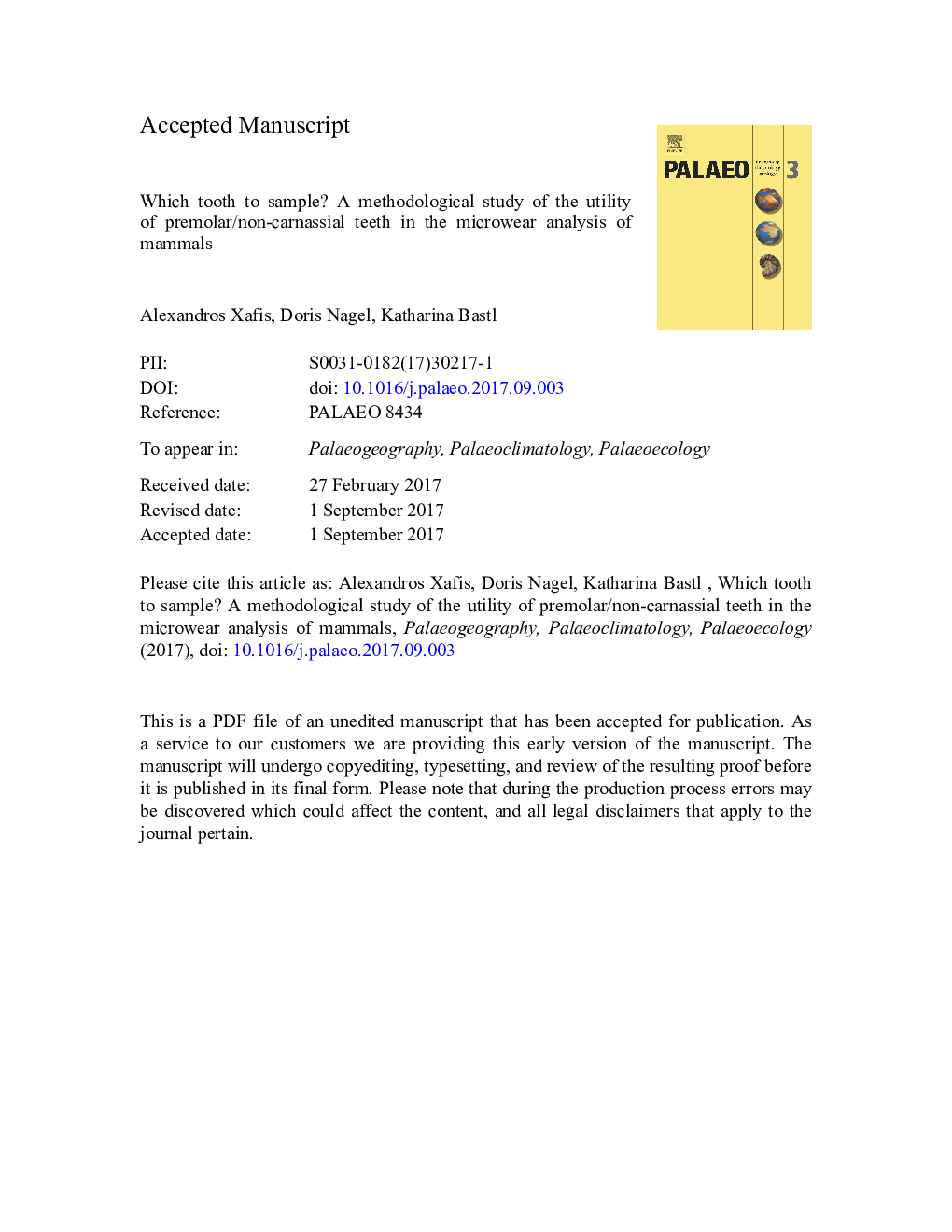| Article ID | Journal | Published Year | Pages | File Type |
|---|---|---|---|---|
| 8868573 | Palaeogeography, Palaeoclimatology, Palaeoecology | 2017 | 42 Pages |
Abstract
Low magnification dental microwear constitutes one of the most important proxies on the ecology and evolution of diet in mammals. Numerous studies have been established on the reconstruction of dietary ecology of even-toed and carnivorous taxa. To date, these studies have used the second permanent molars or carnassials exclusively, for ungulates or carnivores, respectively. In this study, for the first time, premolars and non-carnassials of artiodactyls and carnivores, respectively, were used. Tooth samples from nine artiodactyl and eight carnivore taxa, covering the largest dietary spectrum possible, were evaluated and the microwear signal of the premolars/non-carnassials compared with known data of the second permanent molars and carnassials. The results reveal an almost identical statistical microwear signal of the premolars and molars for artiodactyls and the non-carnassials and carnassials for carnivores. Based on the even-toed taxa, new expanded morphospaces for both browsers and grazers are depicted on an average scratches versus average pits scatterplot. Additionally, dietary tendencies were delineated for the carnivore taxa with low or high counts of small and large pits for specific preferences such as a meat/bone, frugivorous or mixed carnivore diets in non-carnassial tooth positions as well. Lastly, low scratch and low large pit score plots for the ungulate and carnivore taxa, respectively, reveal an even clearer separation between the main dietary categories.
Related Topics
Physical Sciences and Engineering
Earth and Planetary Sciences
Earth-Surface Processes
Authors
Alexandros Xafis, Doris Nagel, Katharina Bastl,
